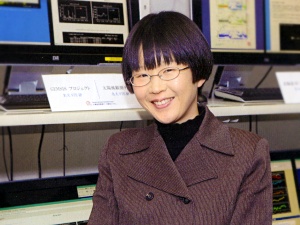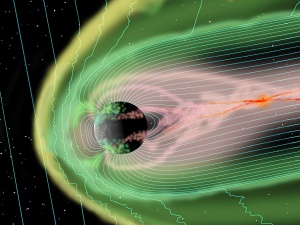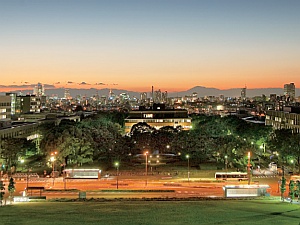Nagoya University has one of the most flexible parental programs in Japan, helping its world-class scientists pursue their research without having to decide between career and family
 In Japan, many female scientists have to give up their career in order to take care of their children. At Nagoya University, however, such a situation is becoming a thing of the past.
In Japan, many female scientists have to give up their career in order to take care of their children. At Nagoya University, however, such a situation is becoming a thing of the past.
"Nagoya University provides a very good environment for female scientists," says Kanako Seki, an associate professor in Nagoya University's Solar-Terrestrial Environment Laboratory. She is also a mother of two boys, aged one and three. "They have facilities to take care of my children while I do my research. It's a fantastic support program."
In 2005, Seki applied for a position as a project-based faculty member in the Institute for Advanced Research (IAR) -- an academy within Nagoya University devoted to nurturing research talent with the aim of developing a community of researchers of the highest caliber. As part of her application, she gave a presentation on her project before the IAR committee and academy members, among them Nobel laureates and many distinguished professors. Seki obviously stood out from the crowd -- the IAR selected her as one of only three researchers that year to join the distinguished ranks of the IAR, and with the honor came a generous start-up grant.
"Apart from the grant, I also received research space, which was most important in my case," says Seki. "Collaboration is vital in my research. Five years ago when I started here, the IAR was able to provide a video-conferencing room for me to collaborate with international researchers, even though at the time such a facility was still rare in Japan."

Seki studies the dynamics of the space environment around Earth and other terrestrial planets, including Mercury and Mars. The solar wind interacts with Earth's magnetosphere, sometimes causing drastic changes in the high-energy particle and electromagnetic environment around the planet, which can result in severe damage to orbiting satellites. To avoid this, scientists need to make precise predictions of the highly complex dynamic variations of the space environment around Earth. Seki tries to understand Earth's space environment through comparison with those of other terrestrial planets.
"In space, particles become ionized because of ultraviolet radiation," explains Seki, "so the investigation of the space environment is the investigation of space plasma phenomena." One of Seki's current projects involves pre-launch theoretical modeling for the BepiColumbo project -- a joint initiative between the Japan Aerospace Exploration Agency and the European Space Agency to study the planet Mercury. Slated for launch in 2014, the mission will include a planetary orbiter for measuring the Mercury's magnetosphere. Seki's team has been developing new and highly sophisticated numerical simulations of the planet's magnetic environment to help understand the dynamics of Mercury's space plasma. One interesting result to emerge so far is the postulated existence of a ring of sodium ions around the planet's equator. Seki will have an early chance to check and refine her model with NASA's MESSENGER Mission entering Mercury's orbit in 2011. If Seki's model is confirmed by measurements made by MESSENGER and BepiColumbo, this would be the first time that such a phenomenon has been observed.
Seki started her project in 2006 with an initial grant that was supposed to run for three years. Her research, however, was interrupted with the arrival of her first child in 2007, a situation that the IAR met with an offer of one year of maternity leave from the IAR project. The flexibility of the research environment at the IAR has allowed Seki to continue to pursue the research for which she has gained international recognition.
On her return to full-time research, Seki has been able to take full advantage of Nagoya University's nursery school, where she leaves her children during the day while she works.
 In addition to the nursery school, Nagoya University recently established an after-school care program for elementary school children aged six to twelve years. Elementary school in Japan normally ends at around 3 pm. For working parents, this can pose real problems. The Nagoya University after-school care program arranges for the children to be picked up at elementary school and brought to campus where they can be taken care of until their parents finish work. Such service is very rare in Japan and has been invaluable in keeping scientists with young families in productive research. Although Seki's children are not yet in elementary school, this service will become yet another helpful support facility for her in the future.
In addition to the nursery school, Nagoya University recently established an after-school care program for elementary school children aged six to twelve years. Elementary school in Japan normally ends at around 3 pm. For working parents, this can pose real problems. The Nagoya University after-school care program arranges for the children to be picked up at elementary school and brought to campus where they can be taken care of until their parents finish work. Such service is very rare in Japan and has been invaluable in keeping scientists with young families in productive research. Although Seki's children are not yet in elementary school, this service will become yet another helpful support facility for her in the future.